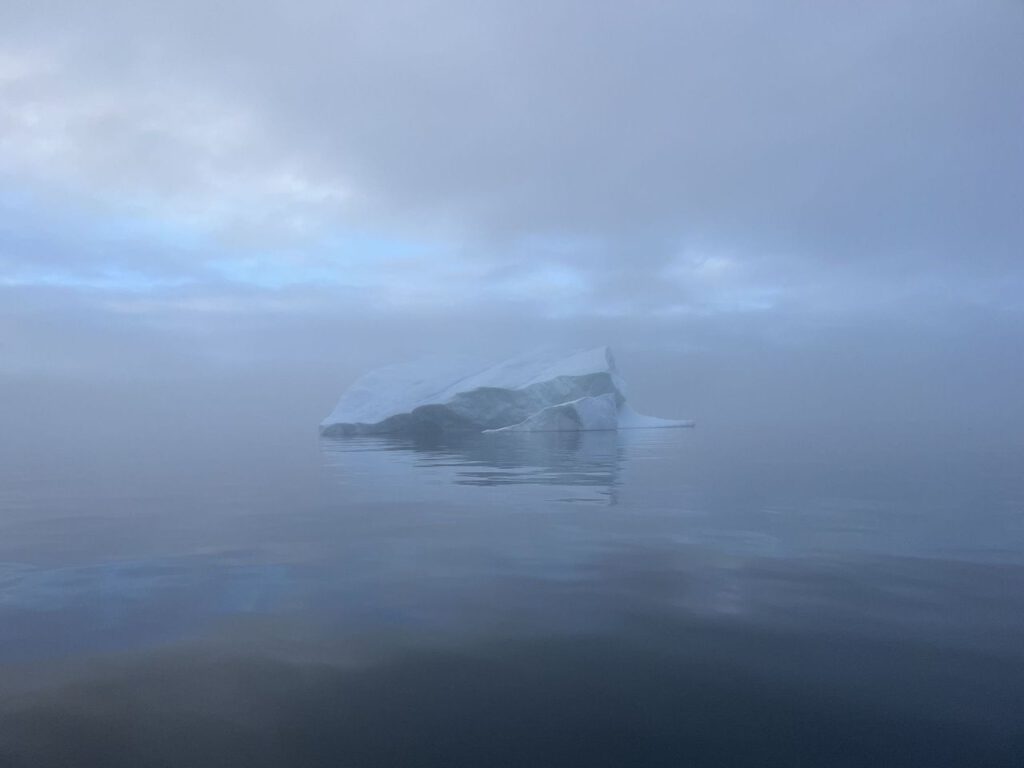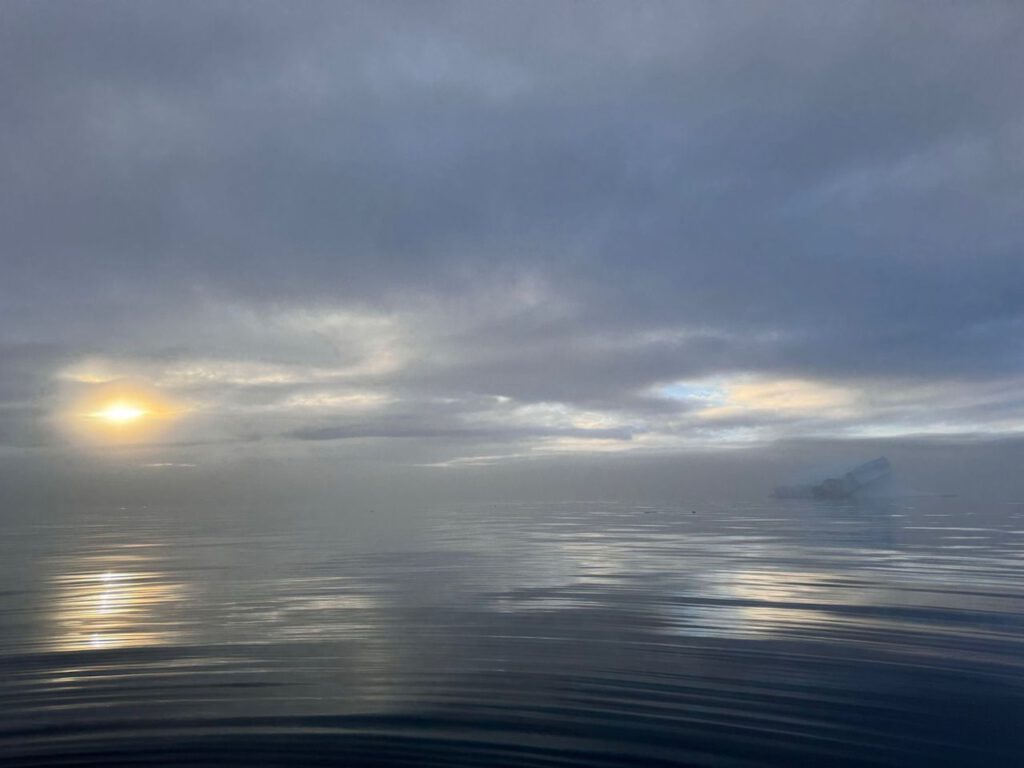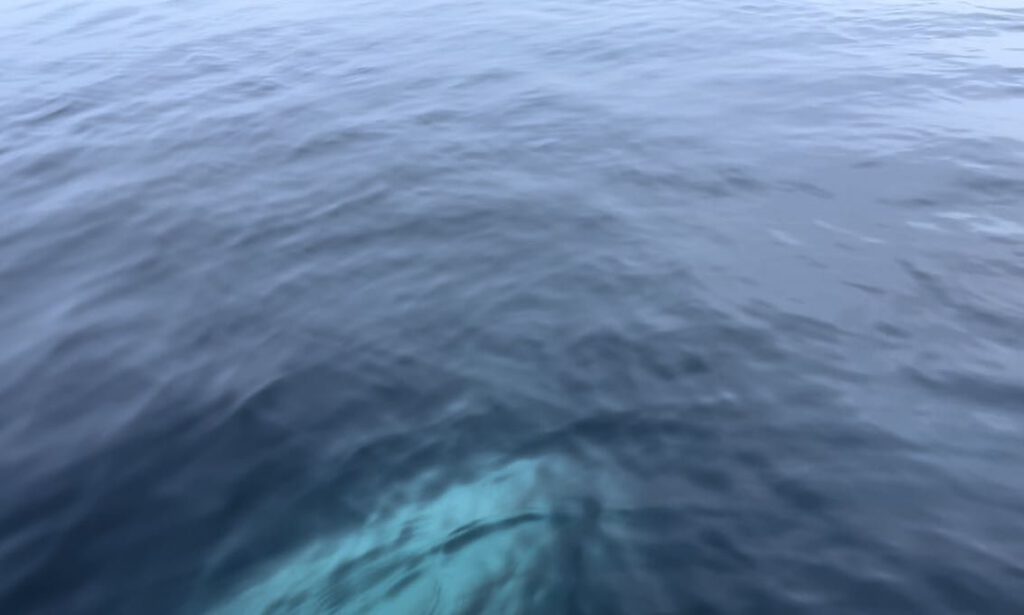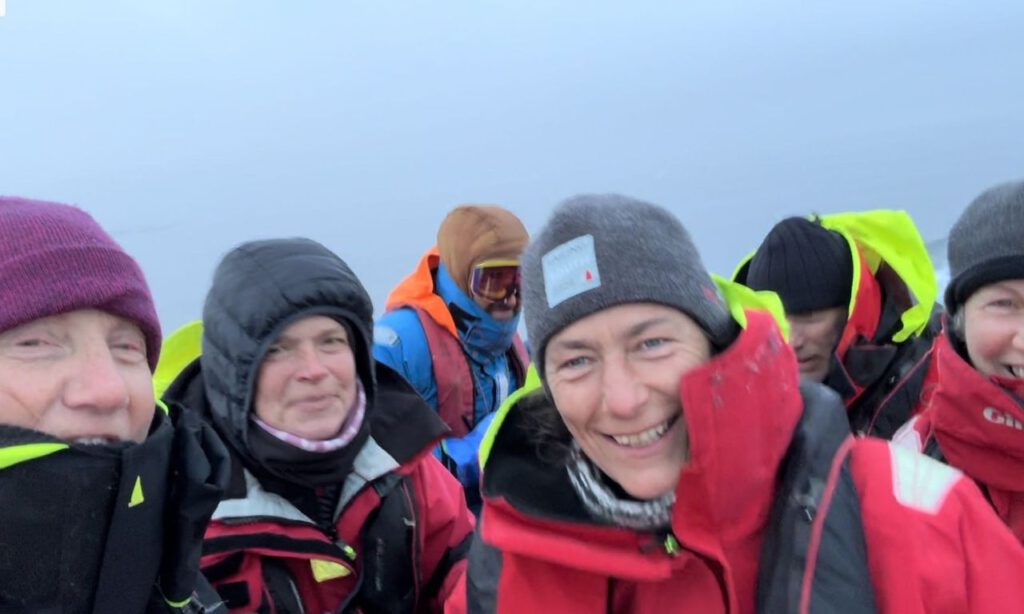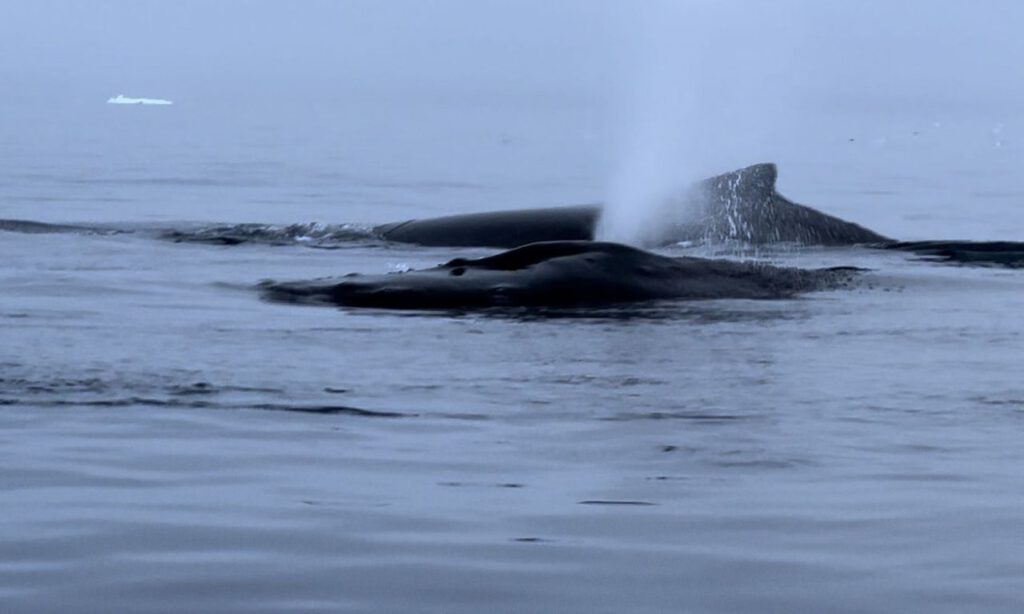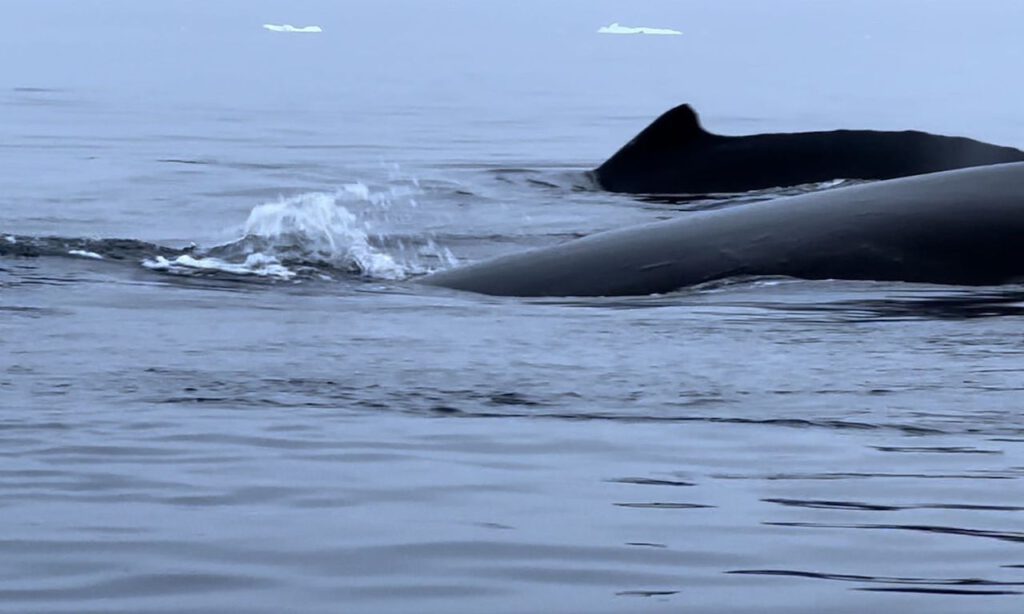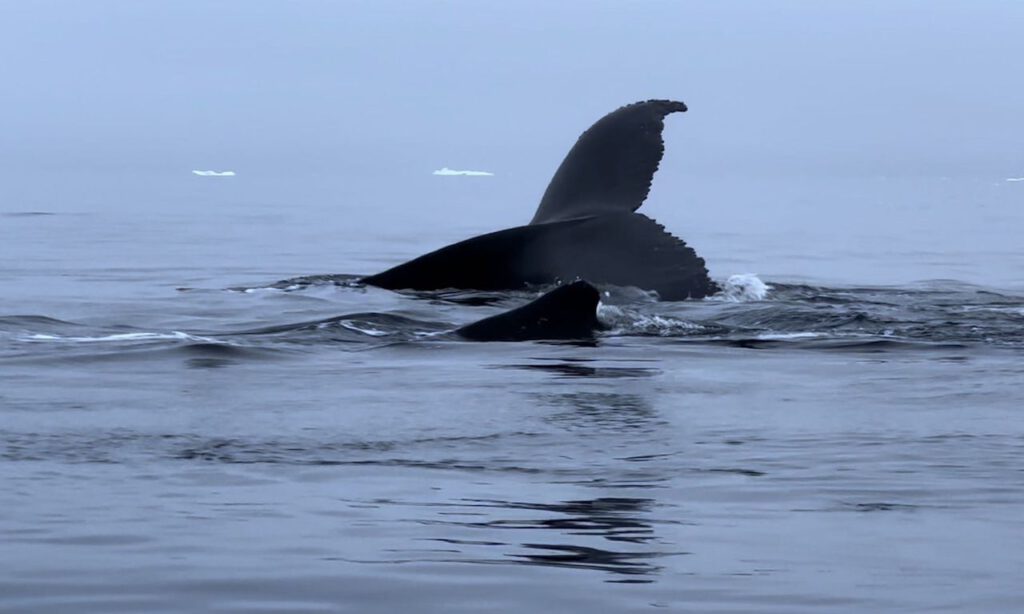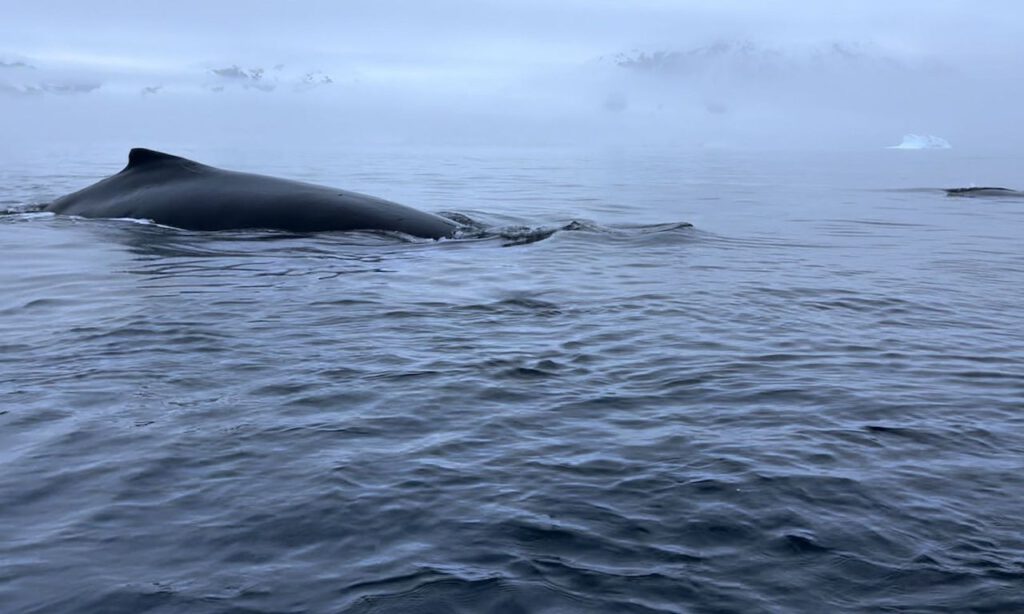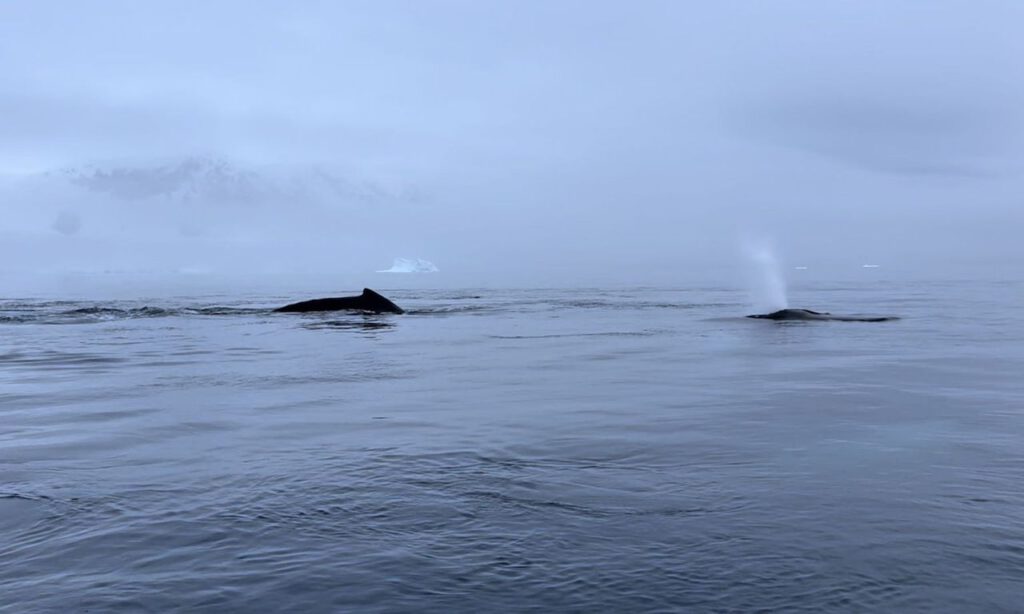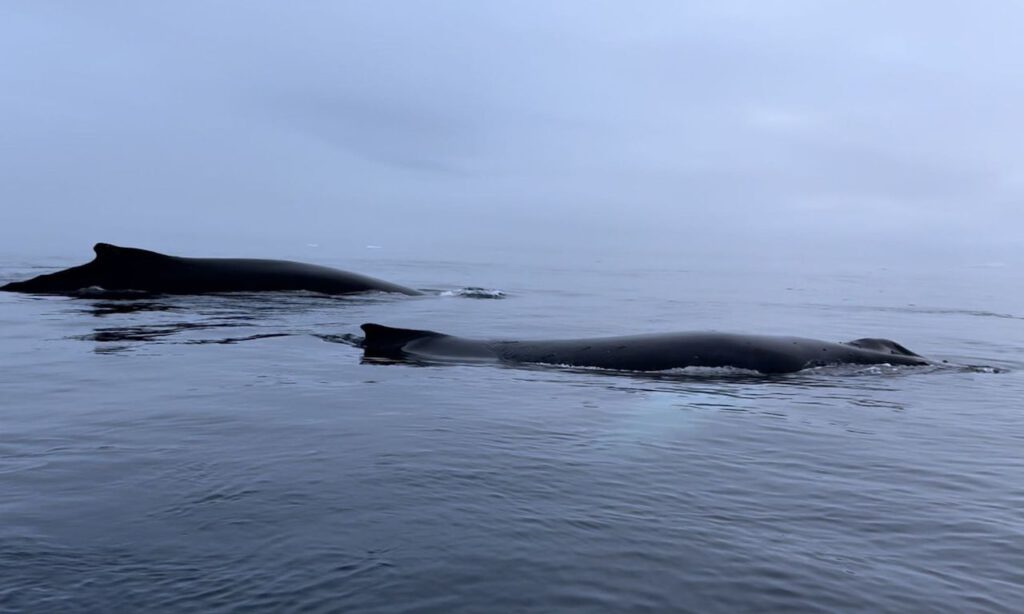It is already afternoon when we reach Enterprise Island. It is gray and cloudy. A light drizzle falls from the low-hanging clouds.
We drop anchor near a bay surrounded by a glacier. Here in Foyn Harbor lies the rusty wreck of the Governøren. At the beginning of the 20th century, the ship functioned as a kind of floating whale factory. From whaling to processing the blubber into oil, everything was done on board. It was one of the largest and most technically advanced whale factory ships of its time.
In 1915, the Governøren caught fire. The captain ran it aground here to save the crew and some of the cargo. The 85 crew members remained unharmed. The wreck became a reminder of the history of whaling in the Antarctic. Half sunken, rusty, rising defiantly out of the water, still imposing, it has now become home to Antarctic terns. Other remnants of these historic times can also be seen in the surrounding area: numerous mooring lines on the rocky coasts of the islands, rusty chains and wooden waterboats that were used to supply fresh water.
The cloudy, gray and wet weather somehow fits in with the decay of the rotting relics and this thoroughly gloomy chapter of Antarctica.
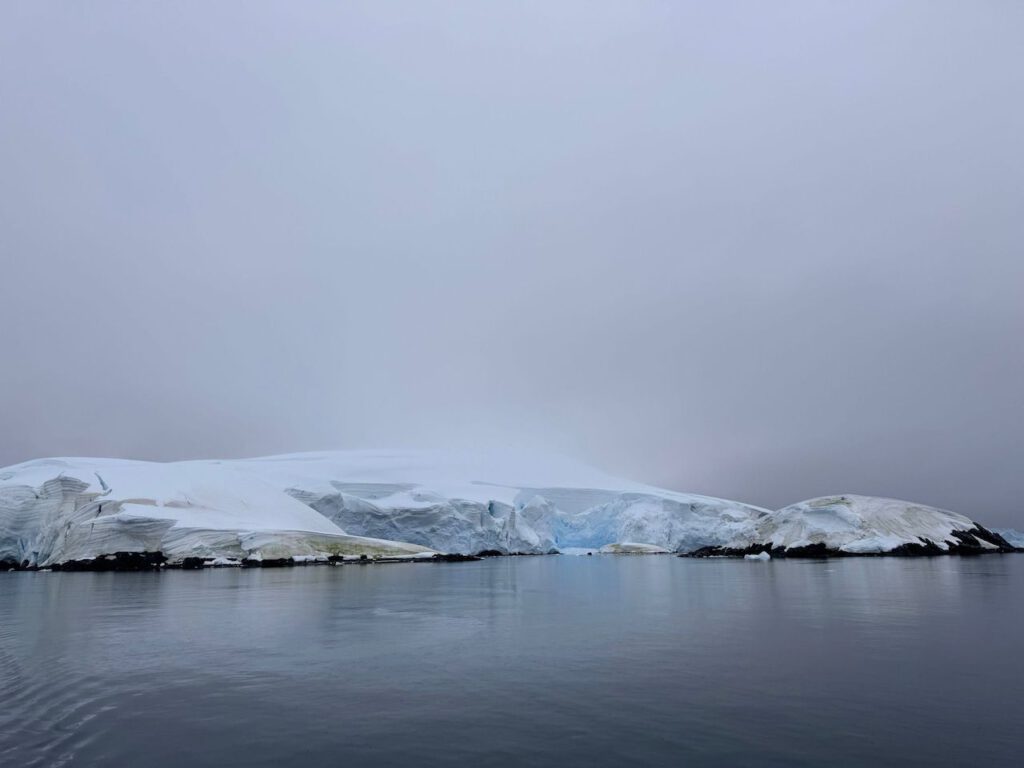

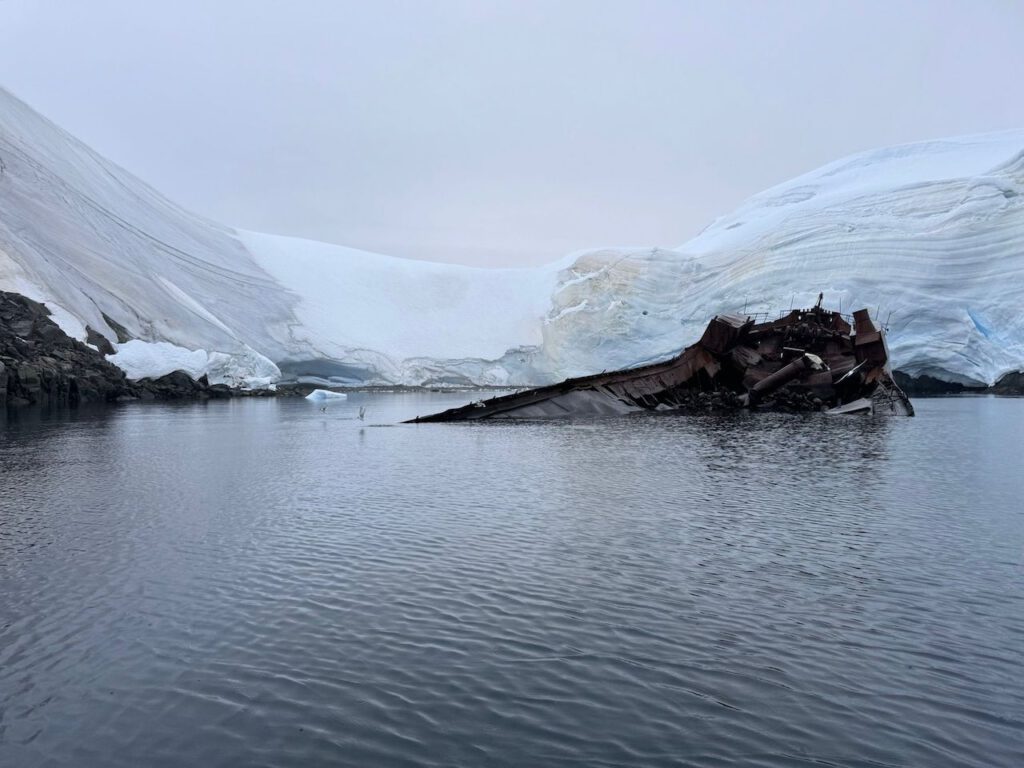
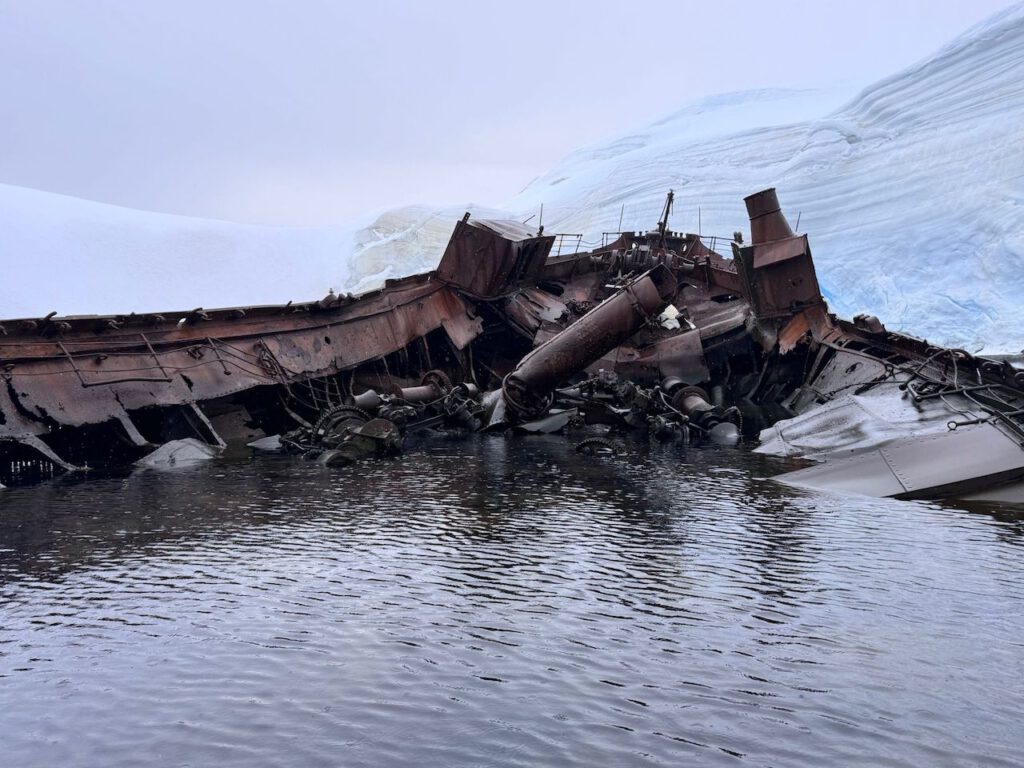
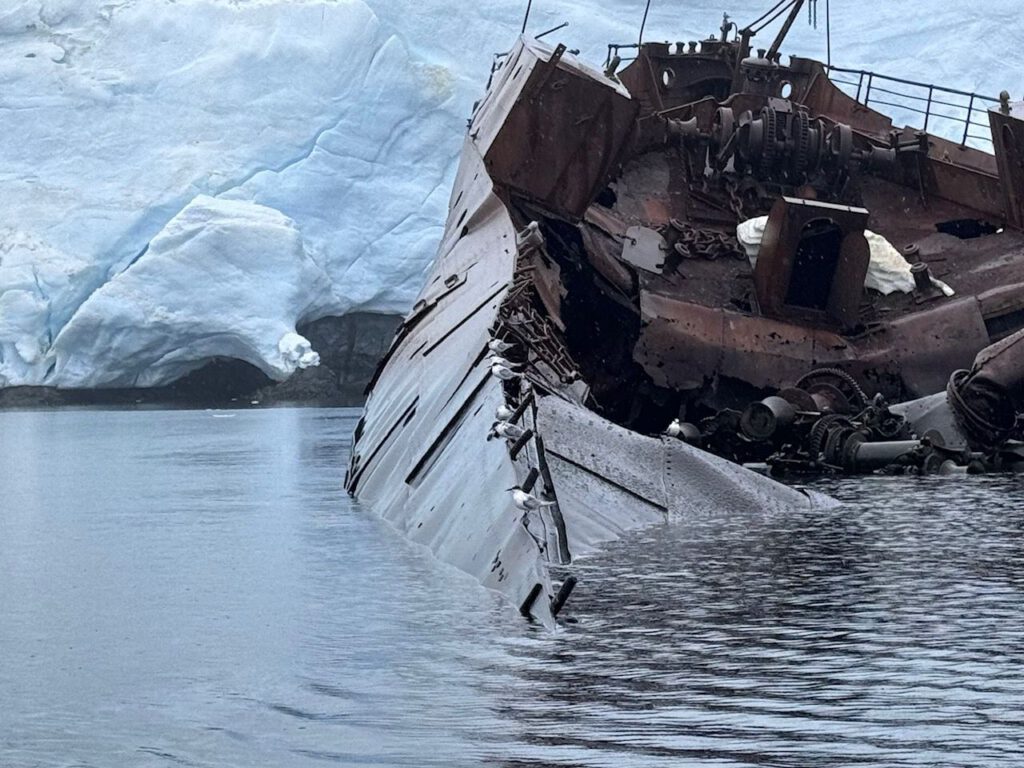
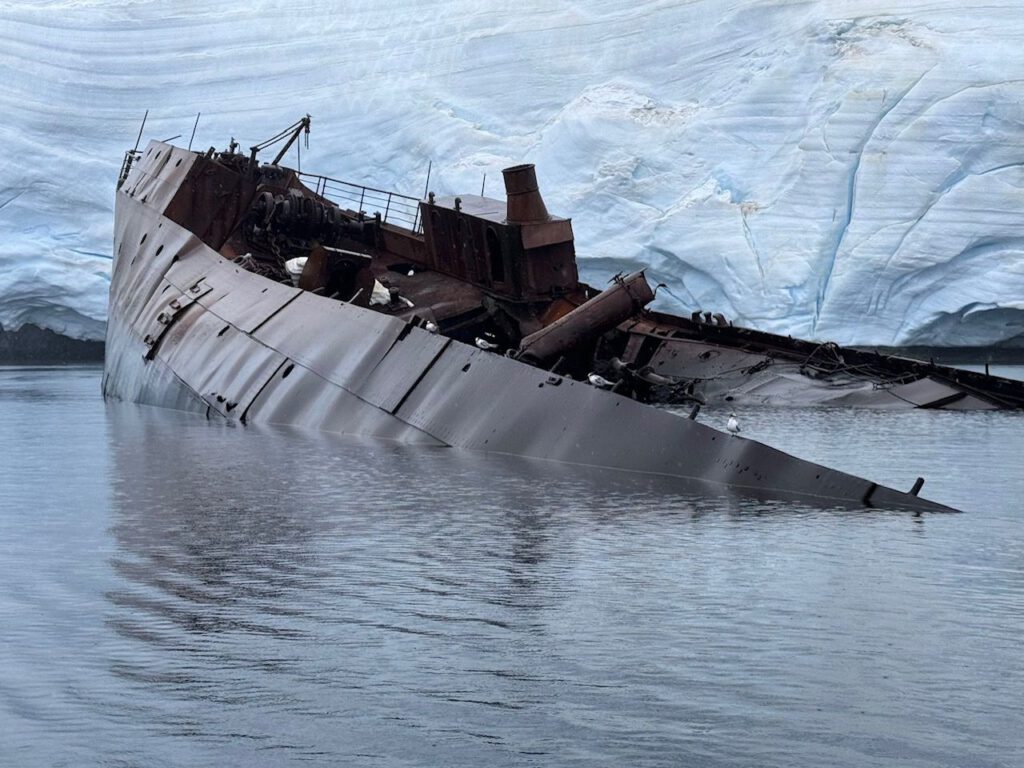
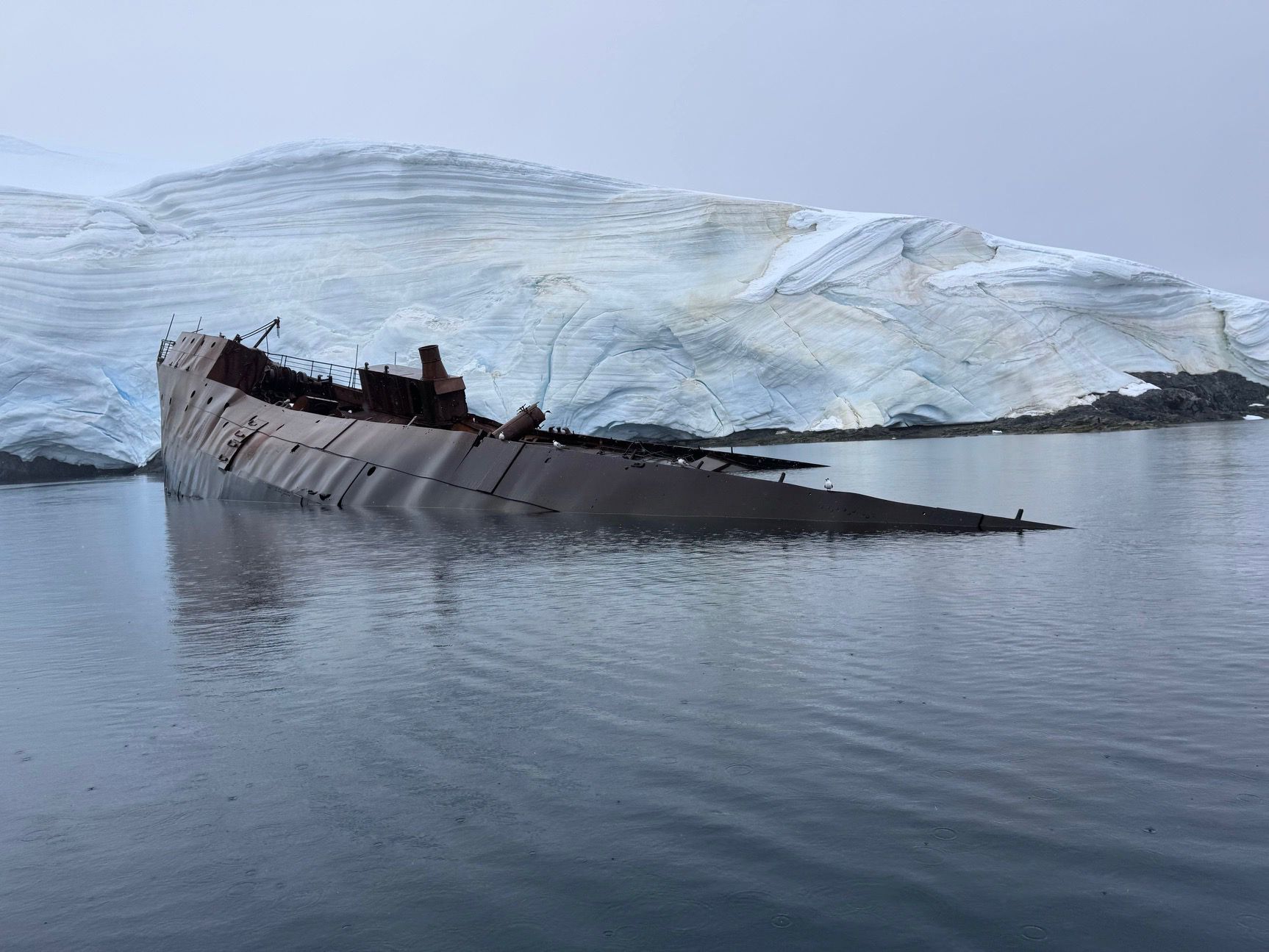
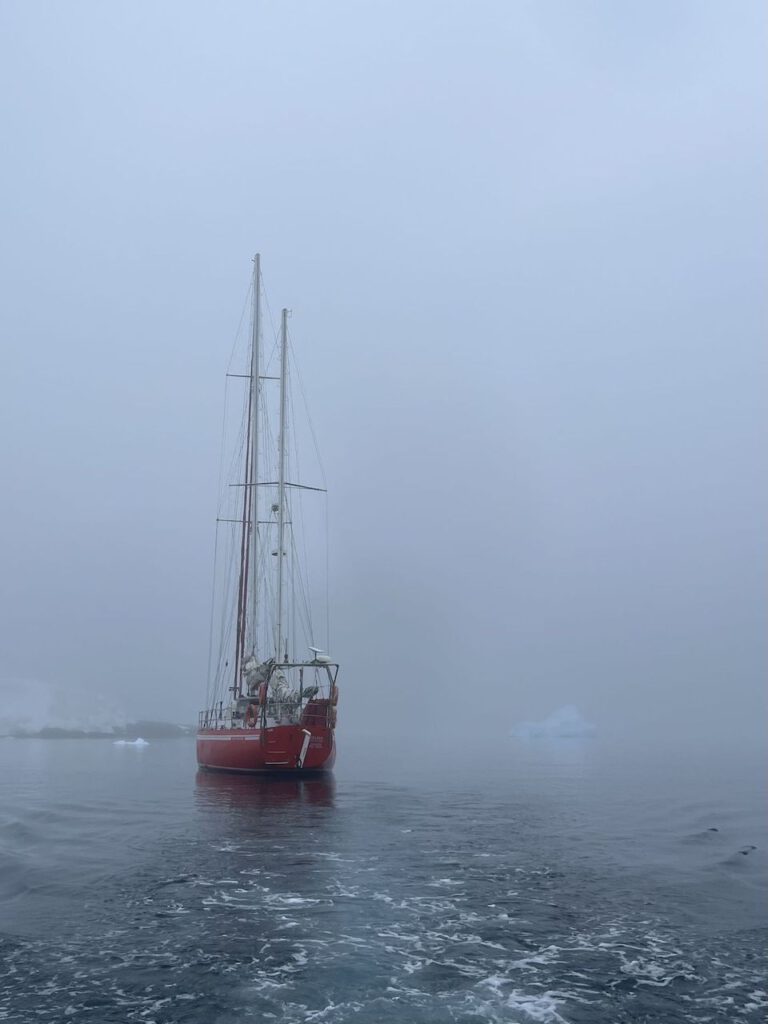
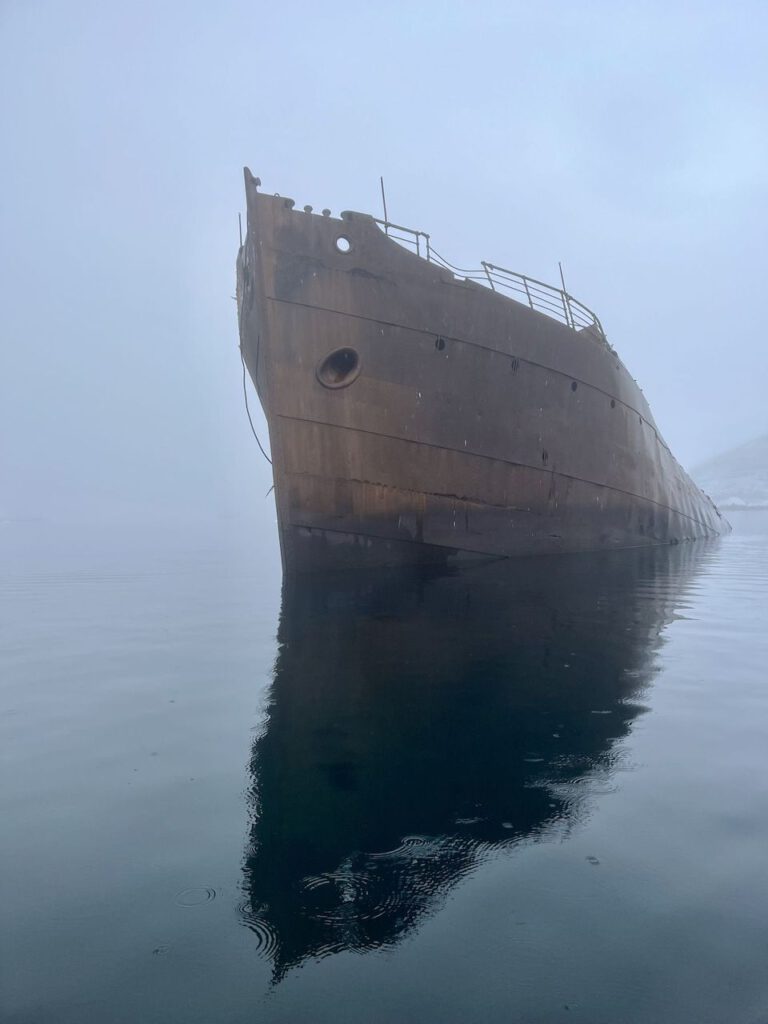
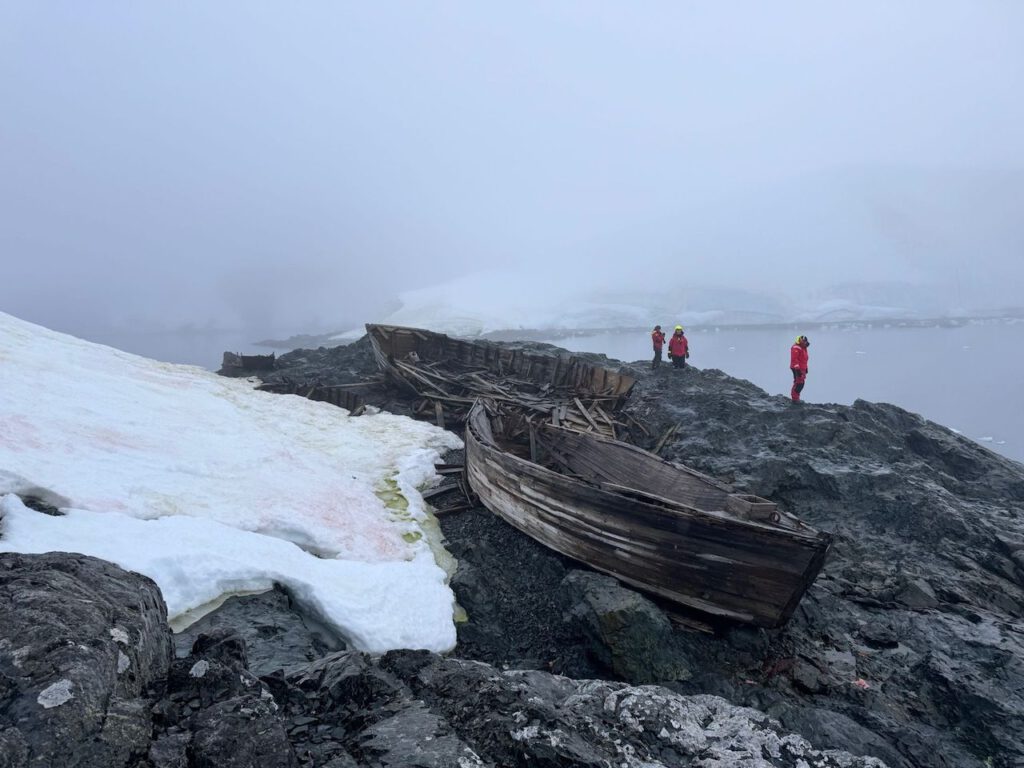
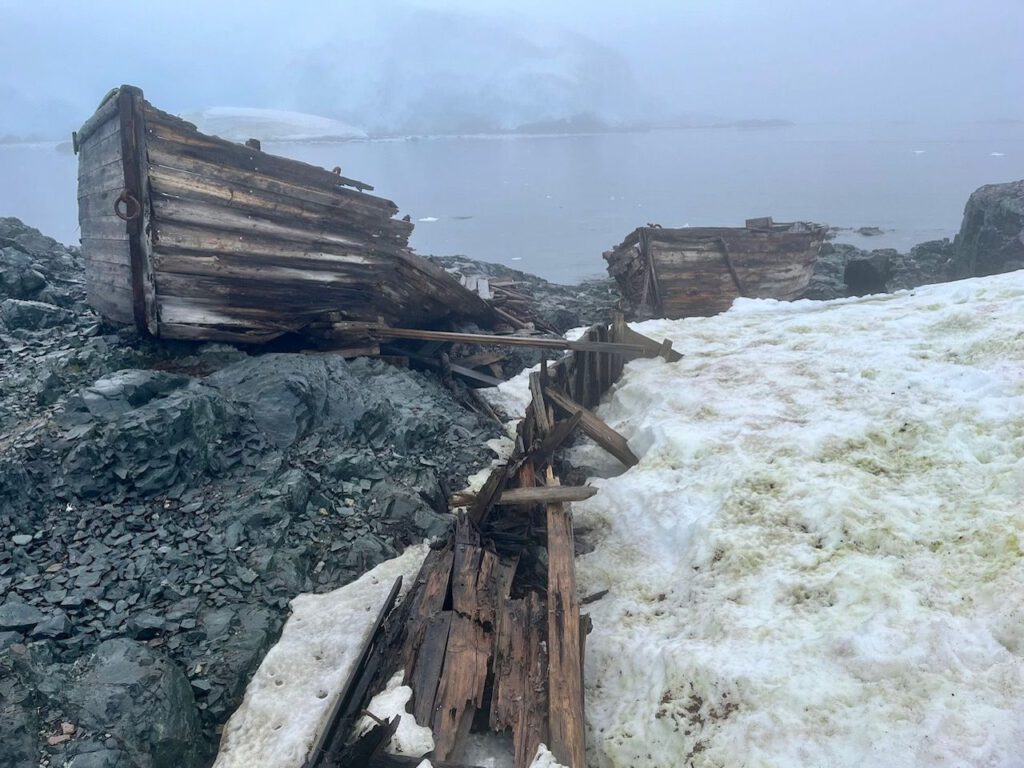
Fortunately, times have changed and the whale population has recovered somewhat. They are here again. Although not quite as numerous as at the end of the 19th century, we have seen and – in the fog – heard many of them again.
Even now we can hear them blowing and breathing nearby… there must be some around here somewhere. And we set off in the dinghy to try our luck at finding them.
We feel our way through the fog for almost two hours, stopping again and again to listen. Silence, nobody dares to breathe. Then we hear a blast! We try to make out the direction and rough distance, which is difficult in these conditions. The silence and the fog carry the sounds for miles. We drive a little in the suspected direction and start the game all over again. Again and again. The whales are making fools of us, the blowing can now be heard from several directions. We decide on one and are lucky. Our patience is rewarded: at some point the fog clears and we can see them at a distance. There are three humpback whales. A fourth approaches from a different direction. We sail towards them a little further in the dinghy. Then we switch off the outboard motor, let ourselves drift and watch them silently and reverently. They slowly come closer, all four of them, and are eventually with us, next to us. Shiny black. Diving up, down, up again, under us. We hold our breath. The whales blow, breathe, puff in their very own, calm rhythm. This archaic sound, these giants of the oceans so close to us – it is incredibly impressive and always gives us goose bumps. An encounter, an experience that gets under your skin.
